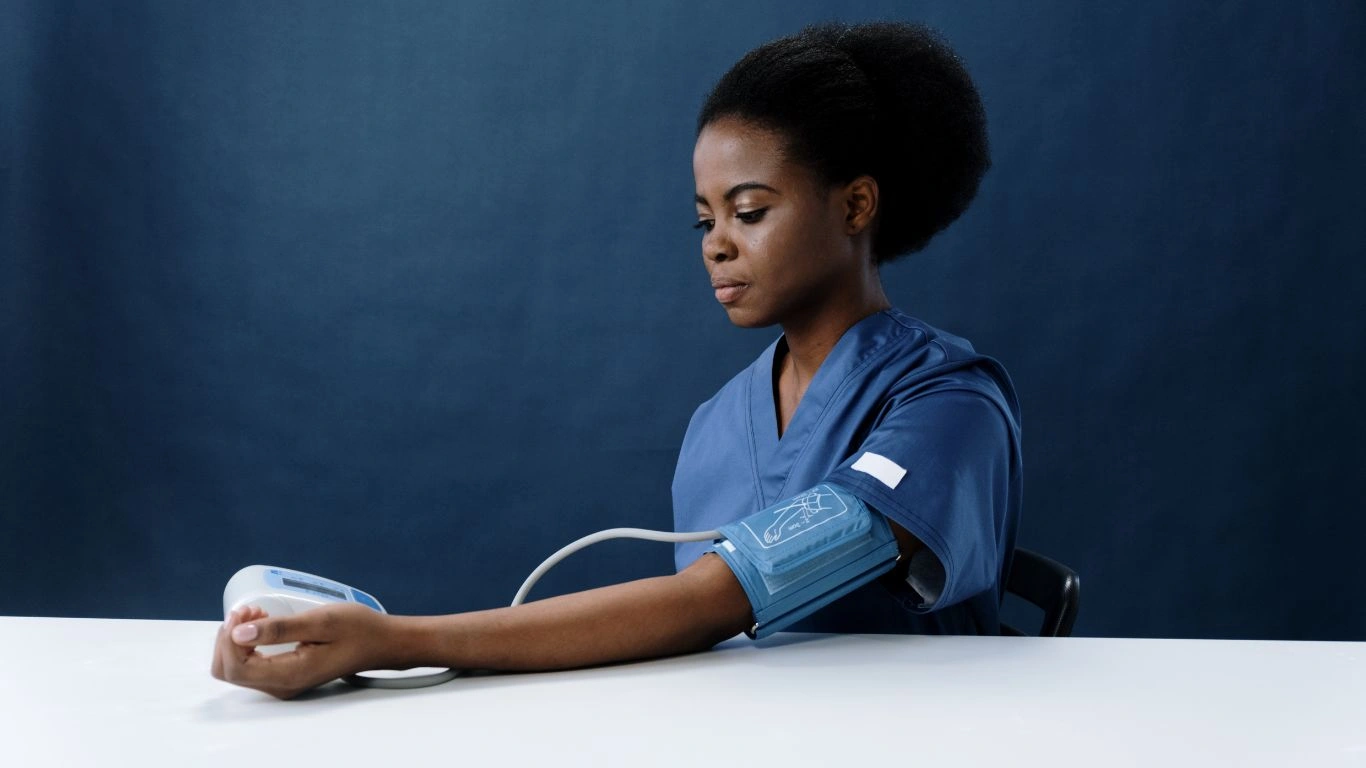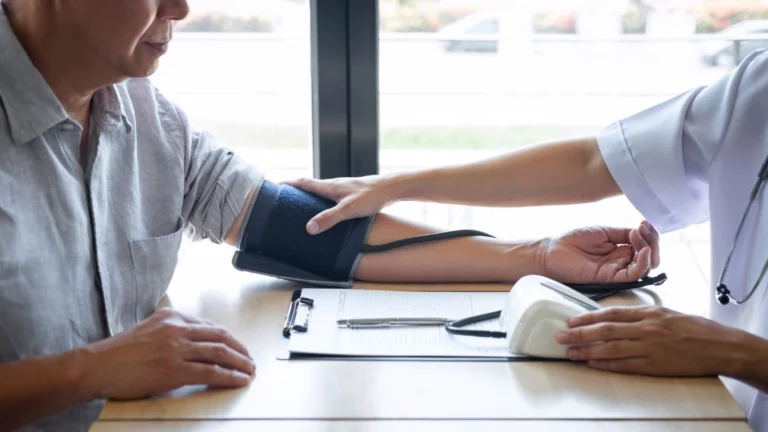Avoid These Common Mistakes When Taking Blood Pressure Readings!
Taking your blood pressure at home? Great! But did you know many people make common mistakes when taking blood pressure readings—even those who think they’re doing it right? Trust me, I’ve seen it all in my years of treating patients with hypertension. These little slip-ups can throw off your numbers, making you think your blood pressure is higher (or lower) than it actually is. Let’s go over these common errors, so you get the most accurate readings every time.
Why Accurate Blood Pressure Readings Matter
Before we dive into the most common mistakes, let’s talk about why this even matters. A slightly off reading might not seem like a big deal, but it can be. Imagine:
- You see a higher reading than reality and panic unnecessarily.
- Your readings are lower than they should be, and you don’t get the treatment you need.
- Your doctor adjusts your medication based on inaccurate numbers—leading to side effects or poor blood pressure control.
As a hypertension specialist, I’ve had many patients come to me worried about fluctuating numbers. Nine times out of ten, their technique was the culprit. Let’s make sure that’s not happening to you.
 The Most Common Mistakes When Taking Blood Pressure Readings
The Most Common Mistakes When Taking Blood Pressure Readings
1. Using the Wrong Cuff Size
This is a big one! If your cuff is too small, it can artificially raise your readings. If it’s too big, you might get falsely low readings. I’ve seen patients unknowingly use a cuff meant for a much larger arm and then wonder why their numbers seem so low.
How to fix it:
- Measure your upper arm’s circumference and use a cuff that fits properly.
- If you’re unsure, check the sizing guide that comes with your monitor or ask your doctor.
2. Taking Readings Right After Eating or Drinking
Ever taken your blood pressure right after your morning coffee? That caffeine jolt can spike your numbers! Food, alcohol, and smoking can also affect your readings.
What to do instead:
- Wait at least 30 minutes after eating, drinking coffee, or smoking before measuring.
- Make sure you’re relaxed and in a comfortable position.
3. Sitting Incorrectly
Believe it or not, the way you sit can mess with your readings. If your feet are dangling or crossed, or your arm isn’t properly supported, you’re not going to get an accurate number.
The right way to sit:
- Feet flat on the floor, no crossing legs.
- Back supported by a chair.
- Arm at heart level, resting on a table or cushion.
4. Taking Readings When Stressed
Ever had a long, stressful day and then decided to check your blood pressure? Not the best idea. Anxiety and stress can temporarily spike your readings, making you think your blood pressure is worse than it is.
Pro tip:
- Take a few deep breaths and relax for 5 minutes before measuring.
- Choose a quiet, stress-free environment.
 More Mistakes That Can Affect Your Readings
More Mistakes That Can Affect Your Readings
5. Talking During the Measurement
This one surprises a lot of people! Even casual chatting can affect your blood pressure readings. When I remind patients to stay silent during the measurement, they’re often shocked to see a difference in their numbers.
Solution: Stay still and quiet while the cuff is inflating.
6. Measuring at the Wrong Time
Blood pressure fluctuates throughout the day. If you take it at random times, you might get inconsistent results. The best approach? Be consistent.
Better habit:
- Measure at the same times each day, ideally in the morning and evening.
- Keep a log to track patterns over time.
7. Not Emptying Your Bladder First
Yes, really! A full bladder can increase blood pressure by up to 10-15 points. I’ve had patients come in with concerning numbers, only for them to drop after a quick restroom break.
Quick fix: Go to the bathroom before measuring your blood pressure.
 More Common Mistakes When Taking Blood Pressure Readings
More Common Mistakes When Taking Blood Pressure Readings
8. Only Taking One Reading
One of the biggest mistakes I see? Taking just a single reading and calling it a day. Blood pressure naturally fluctuates, so relying on just one measurement isn’t the most accurate way to monitor your health.
What you should do:
- Take at least two or three readings, one minute apart.
- Record all readings and calculate the average.
- If your numbers seem unusual, don’t panic—try again later.
I’ve had patients come in worried about a high reading, but when we took multiple readings, the numbers evened out. Always check more than once!
9. Measuring Over Clothing
This one happens more often than you’d think. People in a rush might strap their monitor over a sleeve, but this can lead to inaccurate readings. A thick sweater? Even worse.
The right way: Always place the cuff directly on your bare skin, not over clothing.
10. Not Positioning the Cuff Correctly
Even if you have the right size cuff, placing it incorrectly can throw off your results. Too high, too low, too loose, or too tight—it all matters.
How to get it right:
- Place the cuff about 1 inch above your elbow.
- The tubing should be aligned with the inside of your arm.
- Make sure it’s snug but not cutting off circulation.
 Small Habits That Can Make a Big Difference
Small Habits That Can Make a Big Difference
11. Not Keeping a Blood Pressure Log
Tracking your readings over time is just as important as taking them correctly. A single reading doesn’t tell the full story—patterns over weeks or months do.
Best practices:
- Use a blood pressure log or a mobile app to track your readings.
- Note the time of day, what you were doing before, and how you felt.
- Bring your log to your doctor appointments for a better overall picture.
12. Ignoring White Coat Syndrome
Some people have perfectly normal blood pressure at home but sky-high numbers at the doctor’s office. This is called white coat syndrome, and it’s more common than you might think.
What to do:
- Measure your blood pressure at home in a relaxed setting.
- Compare home readings with your doctor’s readings.
- If your numbers are consistently higher at the clinic, discuss it with your doctor.
One of my patients thought she had severe hypertension because her readings were always high at the doctor’s office. Turns out, her home readings were normal. Understanding the difference can prevent unnecessary stress.
13. Not Replacing an Old or Inaccurate Monitor
Not all blood pressure monitors are created equal. Some become less accurate over time, while others aren’t calibrated properly from the start.
How to check:
- Compare your monitor’s readings with a professional machine at your doctor’s office.
- If your monitor is more than five years old, consider replacing it.
- Look for devices that are clinically validated for accuracy.
 How to Get the Most Reliable Readings
How to Get the Most Reliable Readings
14. Taking Measurements Too Often
Checking your blood pressure every hour? That can drive you crazy. Blood pressure fluctuates naturally, and frequent checking can lead to unnecessary anxiety.
Better approach:
- Measure once in the morning and once in the evening.
- Avoid obsessing over minor fluctuations—look for overall trends.
15. Relying Only on Home Readings
While home monitoring is fantastic, it’s not a substitute for professional medical advice. Your doctor can provide insights that your at-home monitor can’t.
Make sure to:
- Schedule regular check-ups with your doctor.
- Bring your home readings for comparison.
- Discuss any unusual trends or concerns with a healthcare professional.
I’ve had patients try to self-diagnose based on home readings alone. While monitoring is great, always get a professional opinion if something seems off.
 Fine-Tuning Your Blood Pressure Routine for Better Accuracy
Fine-Tuning Your Blood Pressure Routine for Better Accuracy
16. Ignoring Symptoms Despite “Normal” Readings
Numbers don’t always tell the full story. I’ve had patients with “normal” readings who still experienced dizziness, headaches, or chest discomfort—signs that something might still be off. This is why it’s crucial to pay attention to how you feel, not just what the machine says.
What to do:
- If you experience symptoms of high or low blood pressure despite normal readings, consult your doctor.
- Consider additional testing, such as 24-hour ambulatory blood pressure monitoring.
- Don’t ignore persistent symptoms—your body knows when something isn’t right.
17. Not Factoring in White Coat Syndrome or Masked Hypertension
We already covered white coat syndrome (high readings at the doctor’s office but normal at home), but the opposite—masked hypertension—is just as concerning. This is when your readings are fine in a clinical setting but high at home.
Why this matters:
- Masked hypertension often goes undiagnosed, increasing the risk of heart disease and stroke.
- If your home readings are consistently high but normal at the doctor’s office, talk to your doctor about additional tests.
 Lifestyle Adjustments to Improve Blood Pressure Readings
Lifestyle Adjustments to Improve Blood Pressure Readings
18. Overlooking the Impact of Diet and Hydration
Even if you’re taking your blood pressure correctly, your lifestyle choices play a huge role in the numbers you see. I’ve had patients struggle with stubbornly high readings, only to realize their sodium intake was way too high or they weren’t drinking enough water.
Simple tweaks that help:
- Reduce processed foods and salty snacks—excess sodium increases blood pressure.
- Drink enough water—dehydration can cause fluctuations in your readings.
- Incorporate potassium-rich foods like bananas, spinach, and sweet potatoes to balance sodium levels.
19. Not Managing Stress Properly
Stress is a silent contributor to high blood pressure, and I can’t count the number of times I’ve seen patients experience spikes due to chronic stress. Even if you’re taking readings perfectly, stress hormones can temporarily elevate your numbers.
Ways to reduce stress:
- Try deep breathing exercises before measuring your blood pressure.
- Incorporate activities like yoga, meditation, or simply going for a walk.
- Limit caffeine and alcohol, as they can exacerbate stress-induced spikes.
20. Forgetting That Blood Pressure Naturally Changes Over Time
Your blood pressure today might not be the same a year from now. As we age, lifestyle changes, medication adjustments, and health conditions can all impact our numbers. It’s important to monitor trends rather than obsess over single readings.
Key takeaways:
- Regularly check your blood pressure, but avoid excessive measuring.
- Review long-term trends rather than focusing on daily fluctuations.
- Work with your doctor to make necessary adjustments over time.
Final Thoughts
Accurate blood pressure readings are essential for managing hypertension and overall heart health. By avoiding these common mistakes when taking blood pressure readings, you’ll get a clearer picture of your true numbers—helping you and your doctor make informed decisions about your health.
Remember, small habits can make a big difference. Whether it’s sitting properly, measuring at the right time, or making lifestyle adjustments, each step you take brings you closer to better control of your blood pressure.
References
Disclaimer
This article is for informational purposes only and is not a substitute for professional medical advice. Always consult your doctor before making any changes to your health routine.

Dr. Gwenna Aazee is a board-certified Internal Medicine Physician with a special focus on hypertension management, chronic disease prevention, and patient education. With years of experience in both clinical practice and medical writing, she’s passionate about turning evidence-based medicine into accessible, actionable advice. Through her work at Healthusias.com, Dr. Aazee empowers readers to take charge of their health with confidence and clarity. Off the clock, she enjoys deep dives into nutrition research, long walks with her rescue pup, and simplifying medical jargon one article at a time.

 The Most Common Mistakes When Taking Blood Pressure Readings
The Most Common Mistakes When Taking Blood Pressure Readings More Mistakes That Can Affect Your Readings
More Mistakes That Can Affect Your Readings More Common Mistakes When Taking Blood Pressure Readings
More Common Mistakes When Taking Blood Pressure Readings Small Habits That Can Make a Big Difference
Small Habits That Can Make a Big Difference How to Get the Most Reliable Readings
How to Get the Most Reliable Readings Fine-Tuning Your Blood Pressure Routine for Better Accuracy
Fine-Tuning Your Blood Pressure Routine for Better Accuracy Lifestyle Adjustments to Improve Blood Pressure Readings
Lifestyle Adjustments to Improve Blood Pressure Readings




